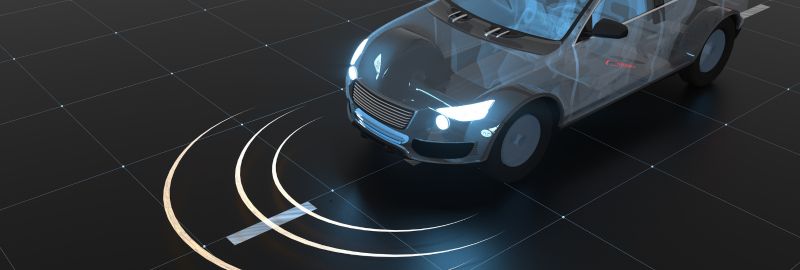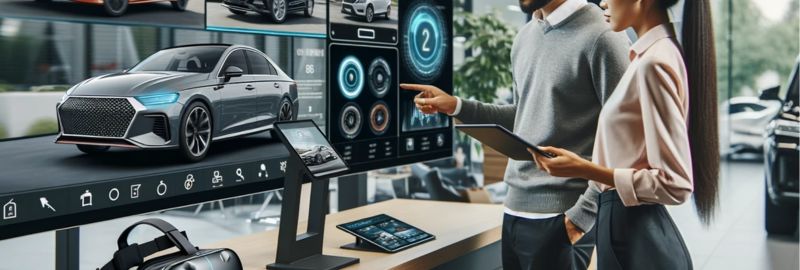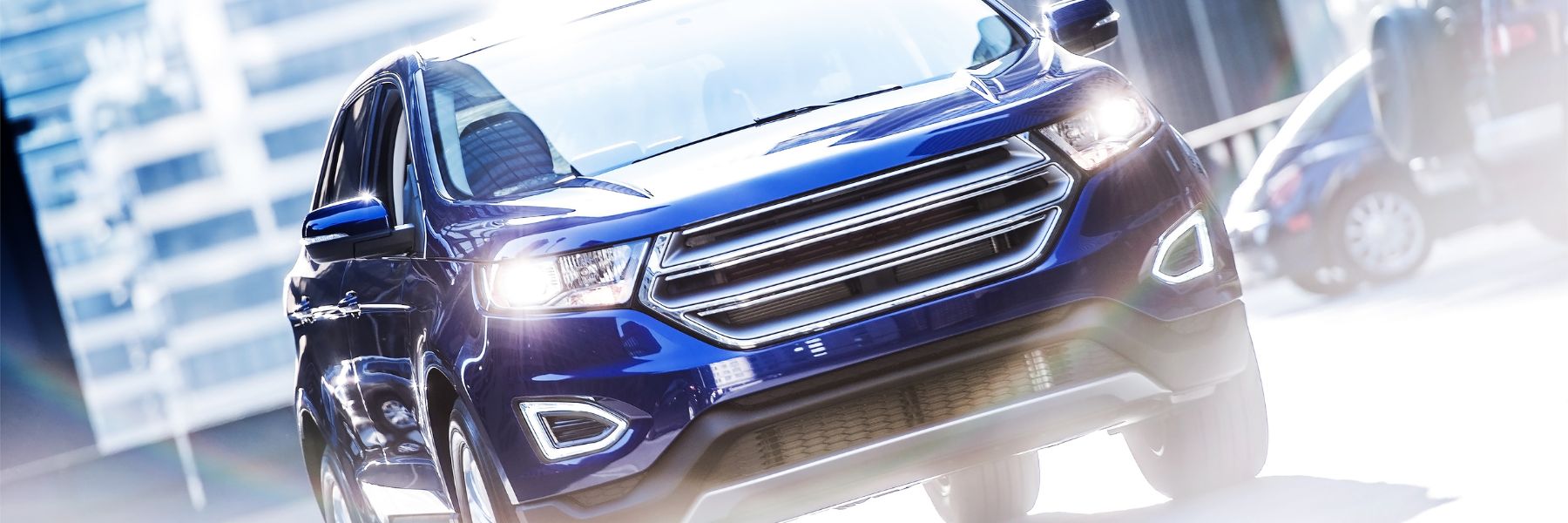The potential for IoT and Industry 4.0 to streamline existing processes
The IoT automotive evolution marks a pivotal chapter in the history of transportation. Since the late 19th century, the automotive industry has consistently showcased human innovation. From assembly lines to the roar of combustion engines, each phase introduced groundbreaking advancements.
Now, in this modern age, digitalization presents a transformative shift. Vehicles are no longer just about transport; they're becoming interconnected hubs. As the automotive landscape embraces this digital turn, it heralds a future defined by intelligent vehicles, streamlined production, and a driving experience that is both efficient and futuristic.
However, this evolution has not been without its challenges. The economic crisis spurred by the pandemic significantly impacted vehicle sales, with registrations in Spain plummeting by 32% in 2020. In fact, pre-COVID-19 sales levels were not reached until 2022.
Despite these challenges, the automotive sector's rebound capacity has outpaced many other industries, propelling its technological and digital transformation.
In this changing landscape, new consumers are emerging, making audience knowledge an indispensable tool for brands and dealerships to navigate this new paradigm effectively. It allows them to reach the right consumer at the optimal moment in the purchase decision process, adjusting their strategies to the fluctuating market dynamics.
The impact on sales models has been profound. The shift from in-person purchases to digital channels is evident. The degree of digitalization in the purchase decision varies greatly depending on the sociodemographic profile of the user and the brand in question.
For instance, an internal study from 2021 revealed that over 75% of high or middle-high socioeconomic status men prefer online purchases, particularly for brands like BMW, Mini, Volvo, Audi, and Volkswagen. In contrast, both men and women of lower socioeconomic status, focusing on brands like Dacia, Opel, or Renault, predominantly opt for in-person purchases at dealerships.
Furthermore, the infusion of IoT technologies is blurring the lines between mechanical engineering and digital ecosystems. Manufacturers and consumers alike find themselves at an intersection of old-world mechanics and cutting-edge digital solutions. The next phase in automotive evolution promises not just better vehicles but a holistic change in how we perceive and interact with mobility.
The Driving Forces Behind Automotive Digitalization
The digital tide sweeping the automotive landscape isn't just a result of technological advancement; it's a response to a myriad of driving forces shaping the industry.
At the forefront of this transformation is the consumer demand for smarter, connected vehicles. Today's drivers are seeking more than just a mode of transport. They crave vehicles that can sync with their digital lives, offering features like real-time navigation, voice-activated controls, and even in-car entertainment systems that rival the comfort of their living rooms. This demand for connectivity isn’t a luxury—it's swiftly becoming the standard.
Simultaneously, there's an undeniable push towards efficiency and sustainability. As environmental concerns gain prominence, the automotive industry feels the pressure to produce vehicles that leave a smaller carbon footprint.
Electrification, lightweight materials, and energy-efficient designs aren't just buzzwords; they're imperatives in today's market. And digital tools, with their ability to optimize processes and reduce waste, play an essential role in achieving these sustainable goals.
Lastly, the global market dynamics and competitive positioning have shifted gears. With emerging markets entering the fray and established players innovating aggressively, standing out requires more than just producing vehicles. It's about delivering an experience, both in the drive and in the purchase journey.
Digitalization, thus, becomes a strategic tool, enabling manufacturers to understand consumer preferences better, tailor offerings, and even optimize supply chains in response to real-time demand.
In essence, the push towards automotive digitalization isn't merely about embracing the new; it's about adapting and thriving in a world that's constantly in motion.
IoT's Impact on the Automotive Landscape

As the digital wave surges through the automotive world, it brings with it the potent promise of the Internet of Things (IoT). The merger of IoT automotive is redefining what it means to drive and to be on the road.
Central to this transformative journey is vehicle-to-vehicle (V2V) and vehicle-to-infrastructure (V2I) communication. These systems enable cars to "talk" to each other and their surroundings.
The implications are vast: from synchronized traffic lights that optimize flow, to cars that can predict and avoid collisions by sharing data about their trajectories. This level of interconnectivity promises not just smoother rides but a complete overhaul of urban traffic systems.
Safety, always paramount in automotive design, has seen significant enhancement through IoT automotive integration.
Smart sensors can now detect potential hazards in real-time, warn drivers, and even take autonomous corrective actions. Features like lane departure warnings, adaptive cruise control, and automated emergency braking are just a few examples of how IoT is bolstering vehicular safety.
Furthermore, the boon of predictive maintenance and real-time diagnostics can't be overstated. Gone are the days of unexpected breakdowns and time-consuming garage visits. Now, vehicles equipped with IoT can self-diagnose, alerting drivers to maintenance needs ahead of time. This not only ensures peak performance and longer vehicle lifespans but also significantly reduces the risk of on-road failures.
Enhancing the Automobile Sales Journey: VASS’s Vision for Digital Transformation

In the multifaceted and dynamic landscape of automobile sales, the customer journey’s evolution is paramount. The nuances of each phase, from the initial awareness to the post-sale engagement, are becoming increasingly digitalized, emphasizing the necessity for a nuanced and customer-centric approach.
VASS’s proposal for refining this journey is characterized by tailored digital strategies to meet the unique demands and expectations of each phase.
Awareness: A Shift Towards Customer-Centricity
- Current Scenario: The initial phase, where potential buyers realize their need for a car, is often marked by a generic approach. Brands focus on showcasing a catalog of technical specifications, lacking a personalized touch and engagement strategy.
- VASS’s Proposal: VASS envisions a transition to a proactive simulator, aiming to understand the potential client’s needs effectively. By focusing on improved segmentation and a customer-first philosophy, the initial engagement becomes personalized, paving the way for tailored interactions and offerings.
Engagement: Personalization at Forefront
- Current Scenario: The engagement phase often faces the challenge of impersonal offerings and a lack of in-depth understanding of the customer’s needs, especially with the emergence of new consumer demographics.
- VASS’s Proposal: The introduction of a recommendation model and personalized advisory fosters a deeper connection with consumers. By adopting a customer-centric vision and innovating attraction models, VASS aims to cater to individual preferences and needs, enhancing the overall engagement experience.
Conversion: Blending the Digital and Physical
- Current Scenario: Traditionally, the conversion phase has been predominantly reactive and entirely in-person. The absence of a digitalized purchasing process hinders efficiency and adaptability.
- VASS’s Proposal: A hybrid advisory model integrating digital process management and automation characterizes VASS’s innovative approach. Enhancing indoor experiences at dealerships and streamlining the sales process, VASS aspires to make the conversion phase seamless, efficient, and customer-friendly.
Loyalty: Beyond Generic Post-Sale Engagement
- Current Scenario: Post-sale engagement is often characterized by generic offerings and mass marketing. The lack of personalized services and proactive engagement diminishes the potential for building long-term customer loyalty.
- VASS’s Proposal: VASS is committed to revolutionizing post-sale engagement by introducing personalized service offerings and a nuanced loyalty and renewal program. By harnessing valuable data and adopting a proactive approach to renewals, the post-sale experience is transformed into a journey of continuous engagement and value addition.
In essence, VASS’s digital transformation proposal aims to redefine the automobile sales journey, elevating it to a realm characterized by personalization, efficiency, and enhanced customer engagement. In a world where the digital and physical seamlessly converge, every touchpoint is an opportunity for enriched interactions, fostering a long-lasting and meaningful connection between the automobile brands and their esteemed clientele.
CDP (Customer Data Platform)
In the modern, data-driven marketplace, understanding and engaging with customers on a personalized level is paramount. VASS harnesses the innovative capabilities of the Customer Data Platform (CDP) to revolutionize the way businesses analyze and leverage consumer data, fostering increased engagement and more meaningful connections.
VASS’s CDP is a robust solution enabling businesses to delve deep into diverse customer data. It analyzes consumption patterns and advertising behaviors across various platforms, including digital advertising, in-store advertising, outdoor media, and connected TV. The platform’s prowess in operating Big Data desegregatedly helps extract valuable insights, enabling the creation of affinity audiences and micro-segmented consumer profiles.
The CDP excels in amalgamating data from diverse sources, utilizing common identifiers to build a comprehensive data structure. It supports the development of hyper-advanced audience profiles, ensuring a holistic understanding of each customer.
With enriched profiling, businesses gain a 360-degree view of users, aligning offerings with individual tastes and needs across various domains. It’s a move from mass marketing to personalized engagement, ensuring each interaction is tailored and meaningful.
Real-time profiling and orchestration capabilities significantly reduce process durations and communication timelines. Internal and external communications become swift, ensuring timely and relevant engagements. The platform’s comprehensive view of users aids in aligning offerings with customer preferences across varied contexts. It seamlessly integrates with tools for updates, registrations, and direct communications, ensuring personalized and timely interactions.
VASS’s CDP is engineered for the mass ingestion of data, transforming it into actionable insights. Real-time analysis of user interactions and accessible data sources is at the core of its functionality. By establishing processes, cleaning, and ingesting data into a unified platform, it identifies varied units like education, economy, and security. The platform stands out in its capability to connect and distribute information across platforms, facilitating seamless communication with internal and external users.
In a world where every consumer interaction is an opportunity to foster loyalty and enhance the brand experience, VASS’s CDP emerges as a catalyst. It not only bridges the gap between voluminous data and actionable insights but ensures that every engagement is personalized, timely, and aligned with the consumer’s evolving preferences. In the transformative journey of automobile sales, it’s a strategic asset, turning data into a narrative that resonates, engages, and builds lasting connections in the IoT automotive landscape.
Revenue Growth Through ‘Match-Shopping’: A Customer-Centric Sales Approach

In the evolving landscape of automobile retail, VASS pioneers a revolutionary shift, steering away from traditional catalog-based information architecture to a more personalized, customer-centric model.
This innovative approach, termed ‘Match-Shopping’, aligns the selling process with the specific needs and preferences of the individual consumer, ensuring a tailored and highly engaging shopping experience.
The transformation involves dismantling the conventional catalog-centric structure and reorienting it to focus on the consumer’s needs. It’s a dynamic shift from a one-size-fits-all approach to a personalized, adaptive journey that caters to the distinct requirements of each customer.
The incorporation of knowledge graphs equipped with natural language understanding capabilities is central to this transformation. It’s not just about presenting products; it’s about understanding the consumer’s language and guiding them to their ideal automobile. For instance, voice search and recommendation systems are fine-tuned to interpret and respond to specific customer queries, ensuring a highly personalized interaction.
In this new paradigm, the creation of structurally designed pages is pivotal. These are not just meant for browsing but are optimized for search engines, ensuring that the customers’ nuanced queries lead them to the exact offerings that match their needs and preferences.
A real-time API platform ensures that the customer-centric model is not just an isolated entity but is integrally connected to both internal and external systems, including voice assistants. It ensures real-time data flow and interaction, enhancing the responsiveness and adaptability of the customer engagement process.
The Adaptive Journey Unleashed
Imagine a customer engagement that begins with an open-ended question: “How can I assist you today?” A response like “I am looking for a family and sporty car” sets the stage for a series of adaptive interactions. The journey unfolds with additional questions delving into the customer’s family, work situation, and specific use cases for the vehicle.
Based on the gathered insights, not only is a tailored offering presented, but opportunities for cross-selling and upselling are identified, aligning additional products and services with the customer’s expressed and latent needs. Ultimately, the customer is graced with a unique recommendation, meticulously crafted to fit their individual requirements and preferences.
In the ‘Match-Shopping’ model, every customer interaction is an opportunity to delve deeper, understand better, and cater more precisely.
It’s where the convergence of technology and personalized service delivery crafts an unparalleled shopping experience, ensuring that every customer doesn’t just find a car but discovers an automobile that is as unique and tailored as their individual needs in the IoT automotive ecosystem.
Challenge Loyalty: An End-to-End Approach to Customer Retention and Loyalty
In the competitive landscape of automobile retail, customer loyalty emerges as a cornerstone of sustainable growth. It is an acknowledged fact that earning a customer’s loyalty costs a fraction compared to acquiring a new one, and the profitability yielded from a loyal customer can be significantly higher.
Loyalty programs are not a novelty for consumers. Up to 83% of consumers participate in a loyalty program, indicating a substantial engagement level and an opportunity for brands to leverage this tool effectively.
The efficient utilization of existing customer data can carve a strategic edge. It aids in crafting personalized experiences, thereby enhancing customer loyalty.
It’s imperative to enhance the value proposition for loyalty program members. An enriched, value-added experience ensures customers are not just accumulating points but are engaged and incentivized to redeem them.
The digital lifestyle transformation is monumental. Brands aiming to secure customer loyalty need to align with this transformation, offering complementary services and products via an integrated eCommerce platform.
VASS’s Solution: An Integrated Loyalty Program
VASS introduces an end-to-end loyalty program solution, a comprehensive approach that not only defines the loyalty plan, encompassing the entire customer lifecycle but also implements it, anchored in a Loyalty Hub that manages 100% of the program.
Loyalty Hub: This platform is a one-stop solution for managing the acquisition and redemption aspects of a loyalty program. It allows members to use or purchase services, consume products, and enjoy special offers. The hub is grounded in three fundamental pillars:
- Audience: We meticulously analyze the needs of the audience, ensuring tailored offerings.
- Technology: Seamless integration with the existing technological ecosystem ensures efficiency and adaptability.
- Business: The loyalty strategy is intricately aligned with the client’s overarching business objectives.
The platform operates on a points or discount system. Members can accumulate points to purchase products, services, or proprietary items. These points can be redeemed across contracting channels for products or services. Alternatively, discounts offer members the option to make purchases at reduced prices instead of accumulating points.
In the realm of IoT automotive, where every touchpoint is an opportunity for enriched engagement, VASS’s integrated loyalty program is not just a tool but a strategic asset. It transforms loyalty from a conceptual framework to a tangible, experiential journey, ensuring that every interaction, every redemption, and every engagement is a step towards fostering a lasting, profitable relationship between the brand and its esteemed clientele.
The Phygital Experience in Automobile Sales: Bridging the Digital and Physical Realms in the IoT Automotive Era

In the contemporary epoch, characterized by a pervasive technological revolution, the automobile industry is undergoing a paradigm shift. One of the most transformative developments is the integration of the phygital experience, a blend of the digital and physical worlds, creating an immersive, interactive, and efficient customer journey.
Here, the IoT automotive plays a crucial role, seamlessly integrating multiple touchpoints and creating a cohesive and enhanced customer experience.
Digital Touchpoints
- Virtual Consultation (Video Call): Digital platforms now facilitate real-time, virtual consultations through video calls. Prospective buyers can connect with sales representatives, explore vehicle features, and receive personalized advice without stepping out of their homes.
- Appointment Management: The scheduling of appointments, whether online or in-person, is now a streamlined process. Customers can book, modify, or cancel their appointments with ease, offering flexibility and convenience.
- Digital Purchase Records: The entire purchasing journey is digitalized. Buyers can trace the process from initiation to completion, with real-time updates, digital documentation, and electronic signatures ensuring transparency and efficiency.
- Vehicle Records: A comprehensive digital dossier builds the life story of the vehicle. It includes predictive and preventive maintenance schedules, ensuring the automobile’s optimal performance and longevity.
Physical Touchpoints
- Innovative Indoor Experiences: Dealerships are transforming into experiential hubs where buyers immerse themselves in the product offerings. The integration of digital elements within the physical space enriches the customer’s engagement.
- Next Generation Dealerships: Embracing the digital sale concept, these modern spaces incorporate virtual reality, IoT automotive solutions, and offer at-home test drives. The amalgamation of digital and physical elements caters to the evolved preferences of the contemporary buyer.
- Social Media Diffusion Experiences: Live streaming events and interactive sessions on social media platforms amplify the reach and engagement, bringing the in-store experience to the digital audience.
In essence, the phygital experience in automobile sales is not a futuristic concept but a present-day reality. The seamless amalgamation of digital convenience and physical experience, powered by IoT automotive innovations, is setting unprecedented standards in customer engagement, service delivery, and operational efficiency. The automobile industry, navigating through this transformative journey, is redefining not just how vehicles are bought and sold, but also the intrinsic relationship between the brand, the automobile, and the consumer.
The IoT automotive evolution marks a pivotal chapter in the history of transportation. Since the late 19th century, the automotive industry has consistently showcased human innovation.


 Facebook
Facebook
 X
X
 Linkedin
Linkedin